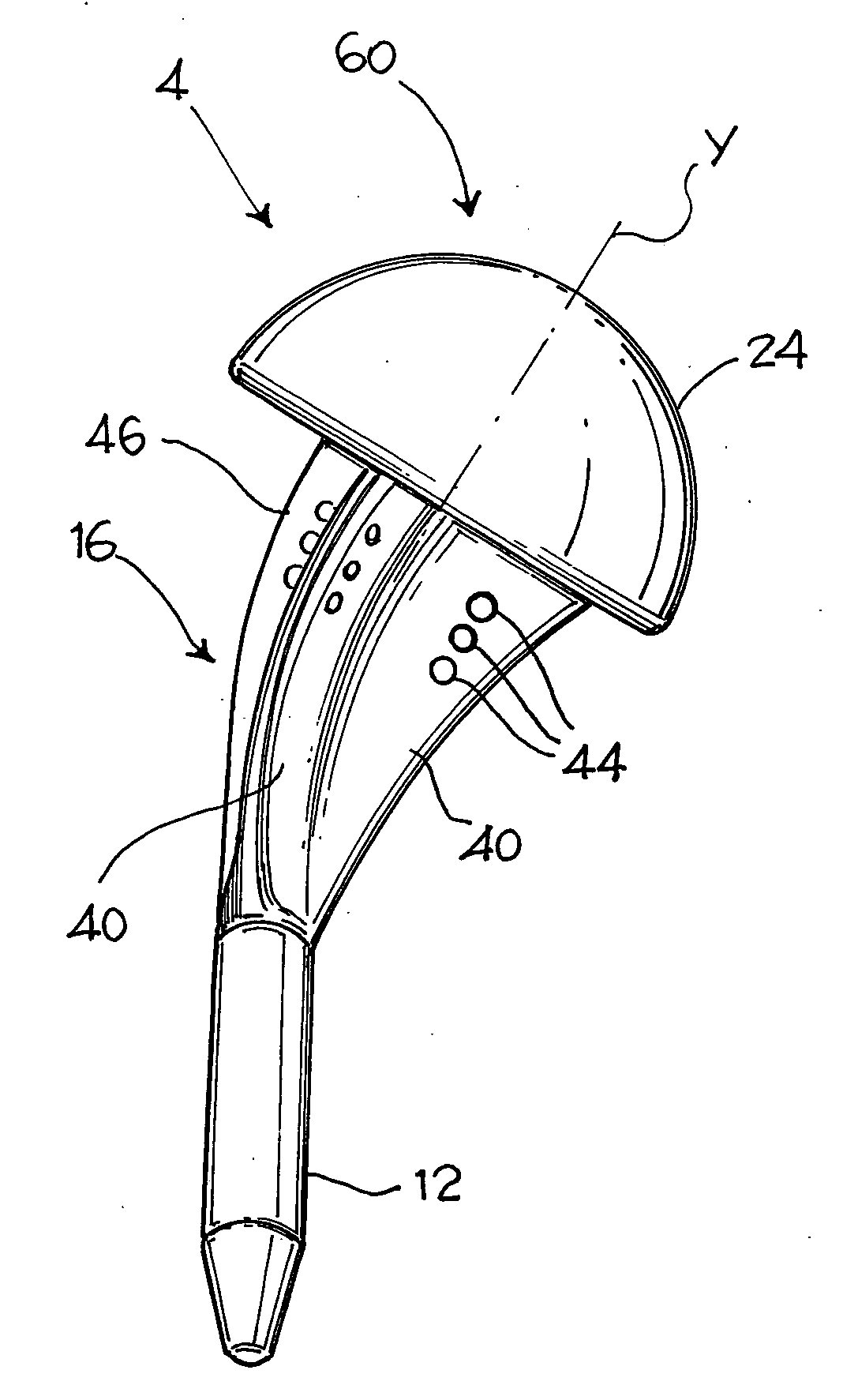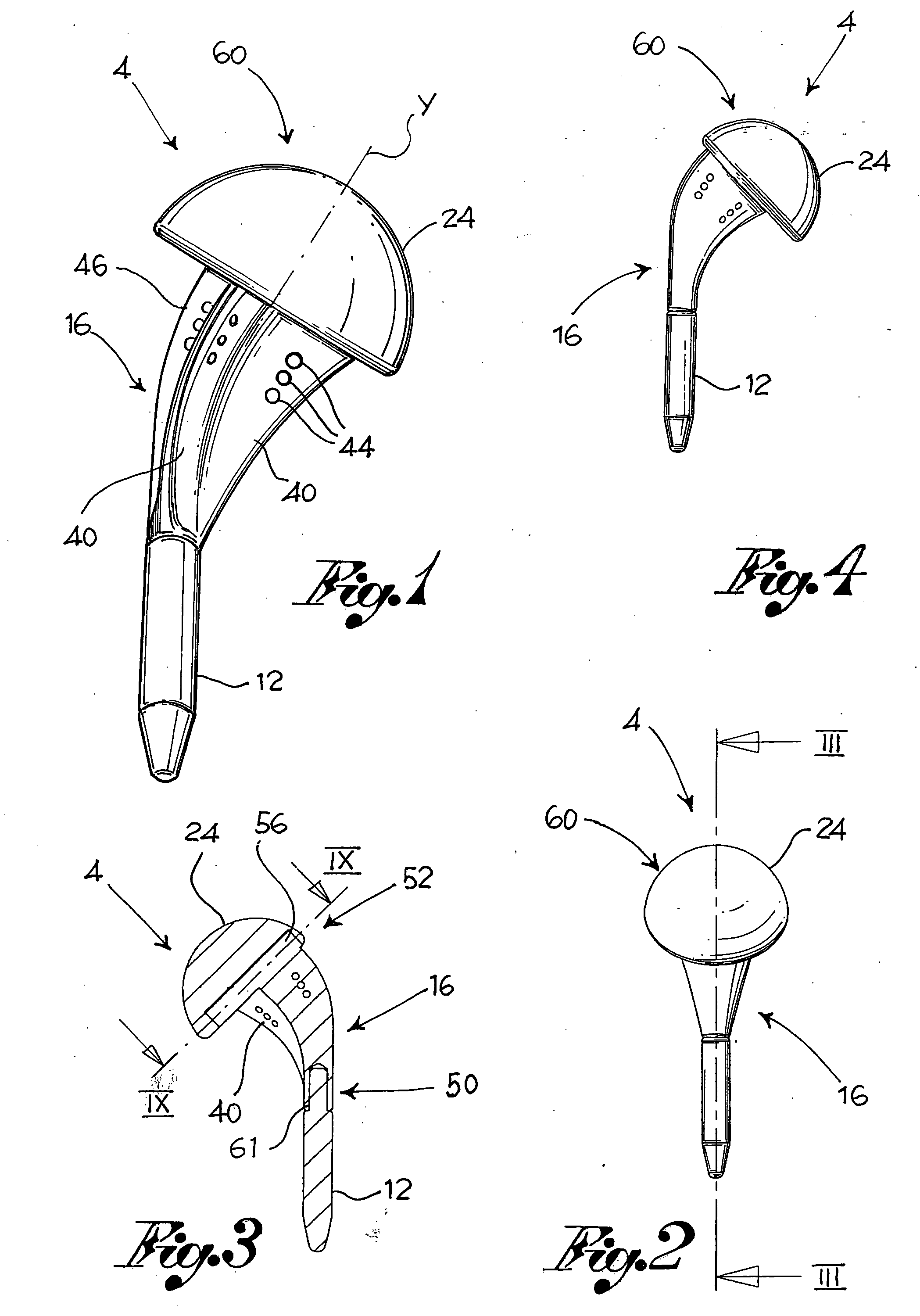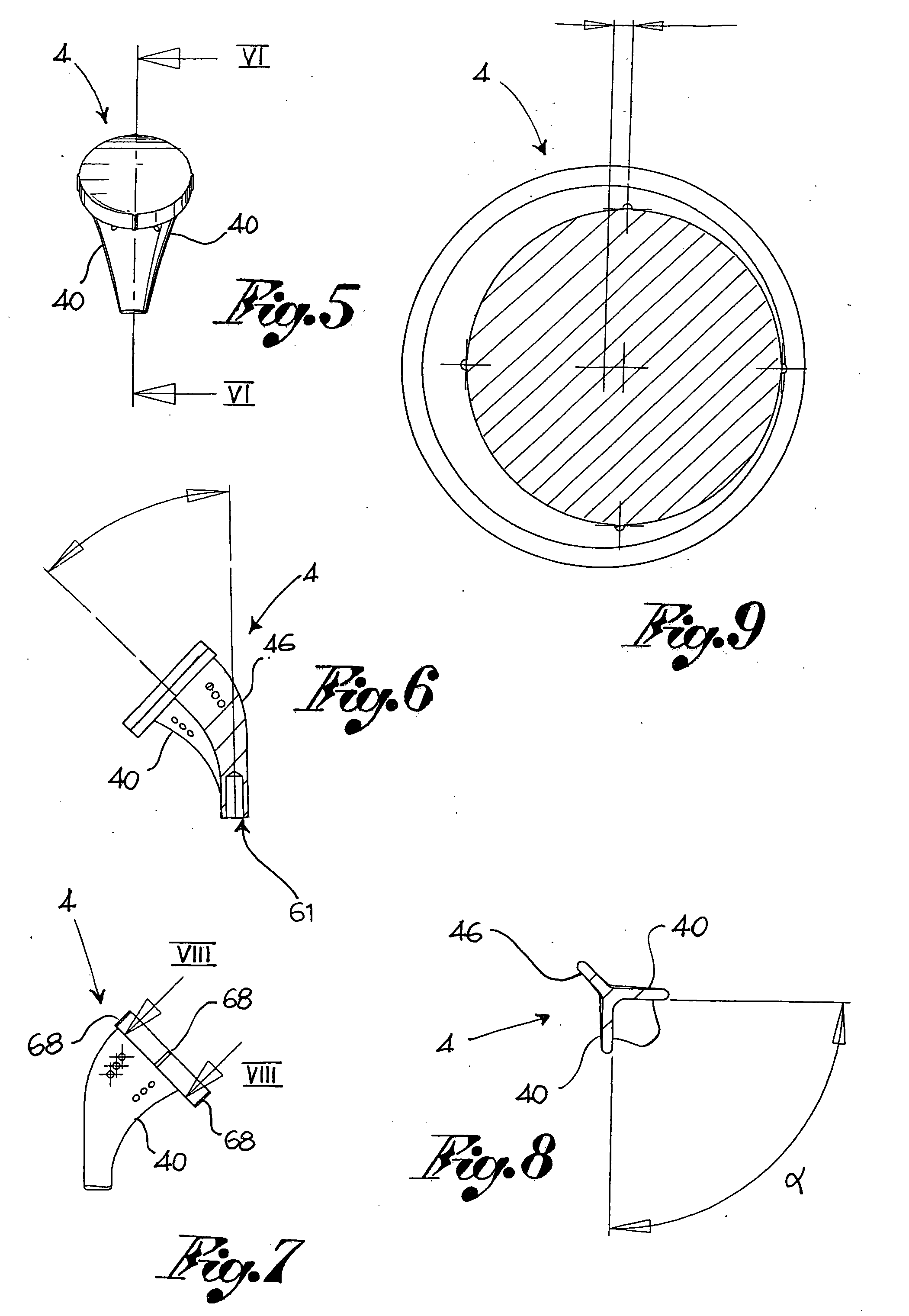Shoulder Prosthesis
a shoulder and prosthesis technology, applied in the field of shoulder prosthesis, can solve the problems of mainly loss of recovery of biomechanical articular function, prosthesis according to prior art, and numerous drawbacks of said prosthesis
- Summary
- Abstract
- Description
- Claims
- Application Information
AI Technical Summary
Problems solved by technology
Method used
Image
Examples
Embodiment Construction
[0060]The common elements or parts of elements present in the embodiments described hereafter will be identified by the same numerals.
[0061]In reference to the aforesaid figures, according to one embodiment of the present invention throughout, the numeral 4 indicates a shoulder prosthesis suitable for insertion in a humerus 6, preferably positioned on the head 8 of said humerus 6.
[0062]According to one embodiment, the prosthesis 4 comprises a stem 12 suitable for insertion into the humerus to attach the prosthesis 4 on the humerus 6, the stem identifying a direction of insertion X.
[0063]The prosthesis 4, according to one embodiment, comprises a main body of the prosthesis 16 or metaphysary component, attachable to said stem 12, and adapted for insertion at least partially into the humerus positioned on the humeral head 8 having a pair of tuberosities 20.
[0064]Preferably, the stem 12 has an axis of symmetry in relation to the insertion direction X, in a manner to form a revolving sur...
PUM
 Login to View More
Login to View More Abstract
Description
Claims
Application Information
 Login to View More
Login to View More - R&D
- Intellectual Property
- Life Sciences
- Materials
- Tech Scout
- Unparalleled Data Quality
- Higher Quality Content
- 60% Fewer Hallucinations
Browse by: Latest US Patents, China's latest patents, Technical Efficacy Thesaurus, Application Domain, Technology Topic, Popular Technical Reports.
© 2025 PatSnap. All rights reserved.Legal|Privacy policy|Modern Slavery Act Transparency Statement|Sitemap|About US| Contact US: help@patsnap.com



